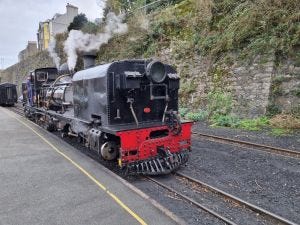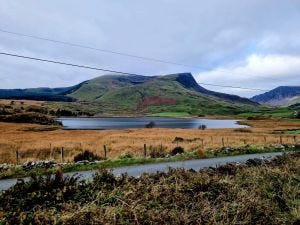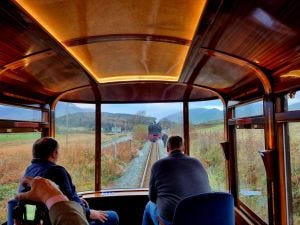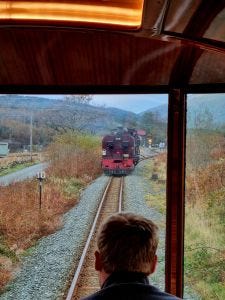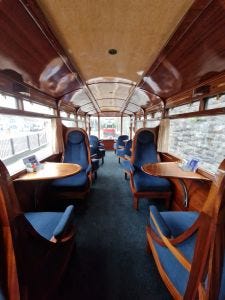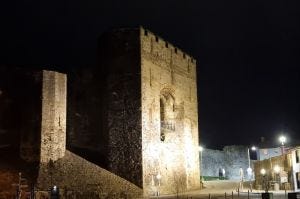Crossing the Llyn peninsula
It took us over four-and-a-half hours to cover the return leg of a trip from Caernarfon to Porthmadog yesterday on the Welsh Highland Railway.
In fairness we did get through three engines.
Things started well, if a little steamily on the 1010 in Caernarfon, when we pulled out behind one of the railway’s Beyer-Garrett articulated steam engines. Unlike normal steam engines with a long boiler, cab, and tender arrangement, these have the boiler and control in the middle and the water and coal at either driving end. They also pivot.
This is important because the curves on the railway are very tight and the alterative would be to use several small narrow-gauge engines.
You can see the route on Relive here
Riding narrow gauge railways is great fun. The track twist turns and goes up and down much more sharply than standard gauge. This means that they can get into the parts of the country that other railways can’t.
Our journey took us across the top of the Llyn Peninsula with stations under the shadows of the towering Welsh mountains in Snowdonia.
We arrived in Porthmadog about half an hour late but had time for lunch at the Harbour Station cafe. We also saw a narrow gauge train pull in from the southern Ffestiniog Railway after travelling along the cob.
The cob, a mile-long, embankment built by Madoc in the 19 century is the reason for Porthmadog’s existence and the railways that converge on the town.
Porthmadog was a slate port, and the narrow gauge railways were built to economically transport roofing slates from the quaries in land to be exported around the world.
It’s definitely worth expoloring that part of Wales.
We left at 1407 behind and headed back towards Caernarfon. But, the engine started to struggle up some of the gradients and eventually stopped altogether. There was a lot of steam and very little movement. We llimped towards Rhyd Ddu (sounds like: rith-thee) where our engine was disconected, and the other engine was attached to take us to Caernarfon. After about an hour, this packed up too.
Eventually, the diesel came to rescue us from Caernarvon and we arrived at the station at 1845 instead of 1625 as advertised.
Our railway company was excellent. They refunded 50% of the ticket price and bought additional parking for those passengers who needed it.
Would we go again? Yes! We traveled in the observation car which was very comfortable, the views were spectacular and the staff were great in a difficult situation. We travelled on the last service of the season and these very old — the last one was built in 1958 — very complex locos had been in use since 20 March with only a few breaks. We might go earlier in the season next time though.


